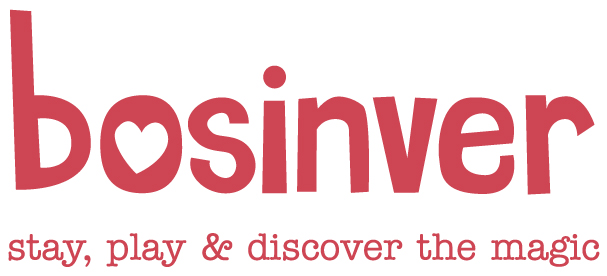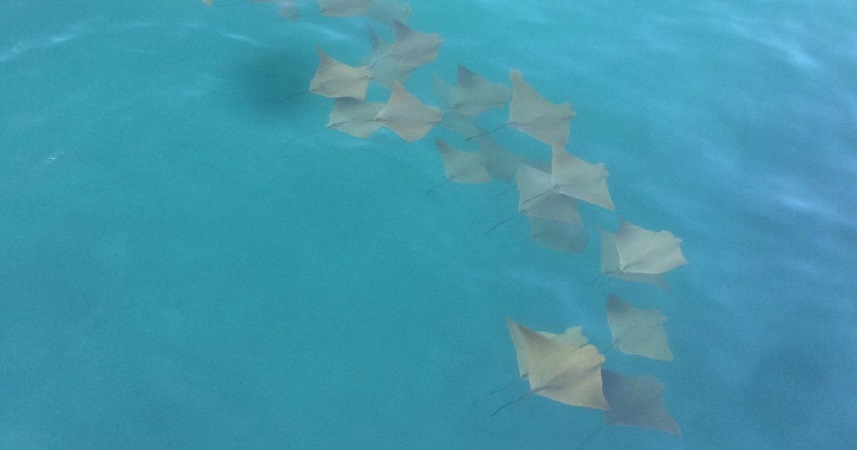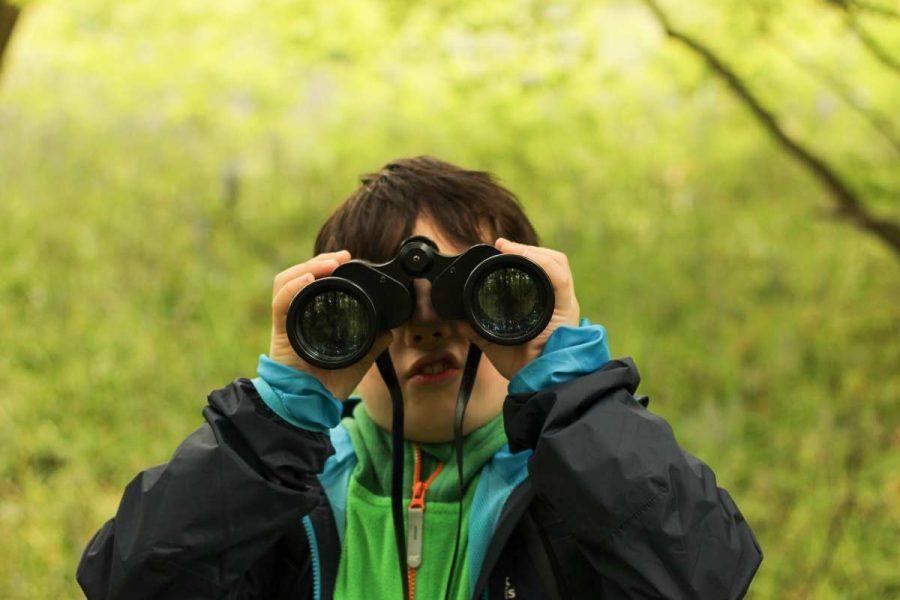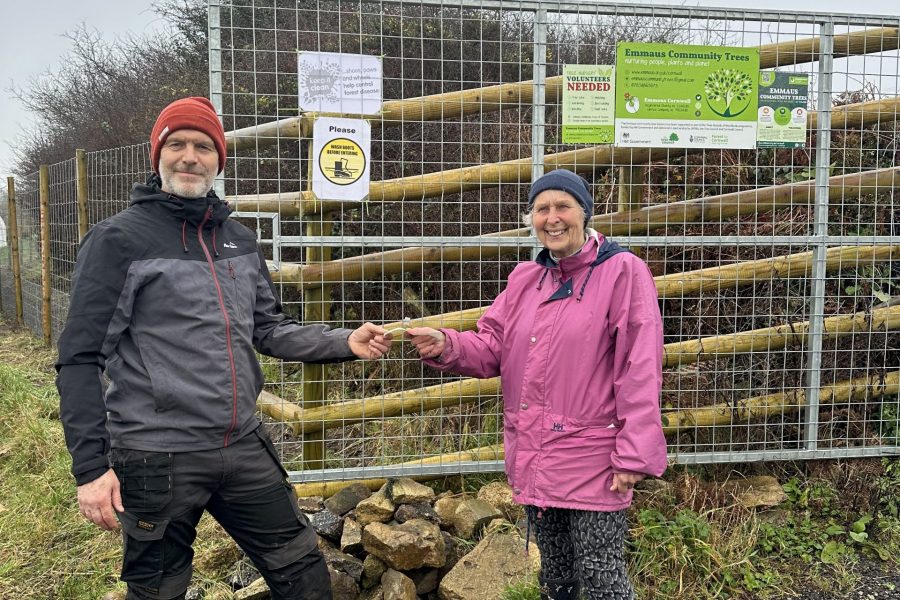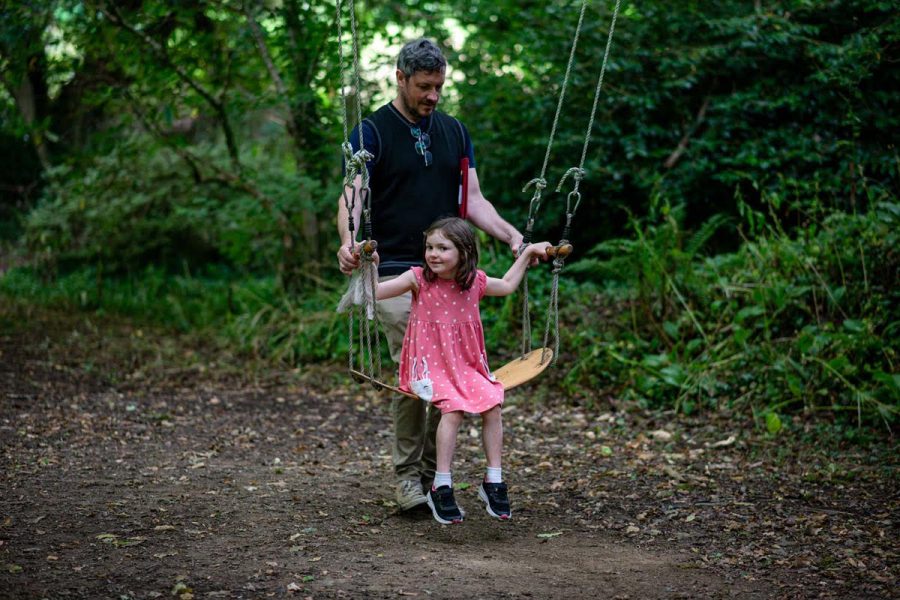We’re delighted to feature a guest post by Pat and Dave Smith’s son, Mark, who’s currently on an epic adventure with his family in South America. Mark is a chartered engineer and environmentalist and founder of Cornish renewable energy company, ZLC Energy.
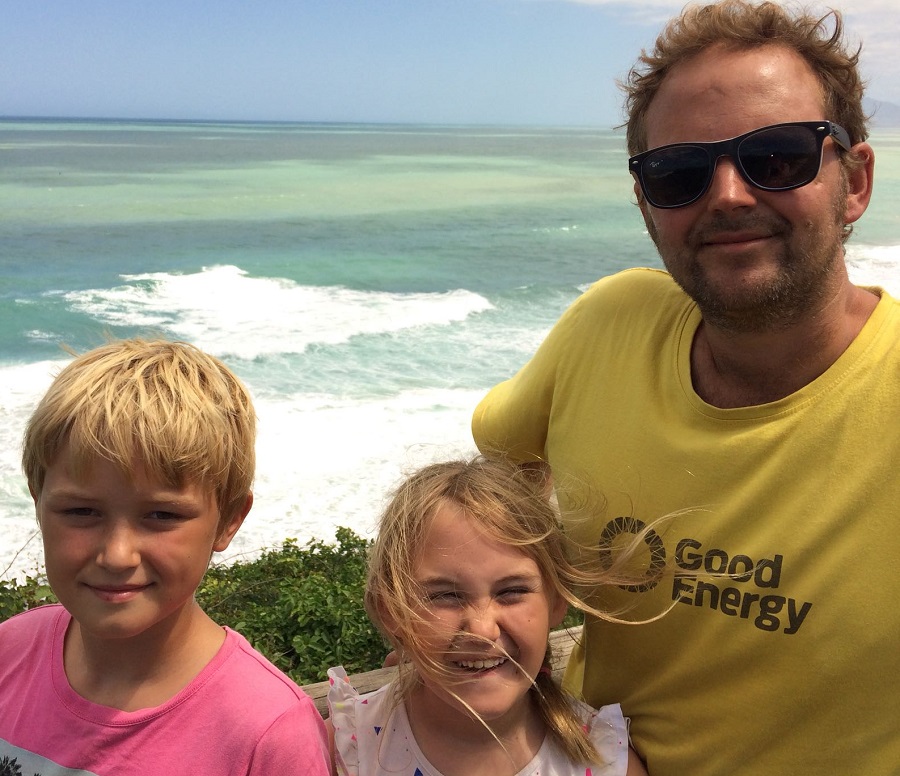
I have taken the opportunity to take a sabbatical to travel with my wife, Ruth, our two children through Central and South America this year. In 2004, we visited Ecuador and our experiences with the environment and people there had a big effect on us, how we live and how we wanted to bring up the kids. We’ve been planning these travels ever since. Our main aim is to inspire the kids by showing them many of the beautiful places and ways to live on our ever crowded planet to give them the tools to choose the right one (environmental work in Cornwall, of course!).
The time to go is never easy to define, but various conditions aligned to make it now – our eldest son, Wilf, goes to secondary school in 2019, our daughter Megan in 2020.

There are many ethical questions raised when considering travelling, particularly air travel, and we wanted to ensure that we had some positive environmental footprint to counter the negatives. We have committed to the following:
1) Carbon Emissions: I calculated the carbon footprint of the trip using the WWF calculator as 15 tonnes CO2 equivalent. I was initially really shocked but then I calculated that:
a. Every week, ZLC Energy bring online new systems saving up to 150 tonnes/ year (our recent CHP installation at China Fleet saves circa 300 tonnes/ year alone).
b. Our renewables at home save about 13 tonnes per year.
In addition, we have signed up to plant more than enough trees to cover our footprint via Trump Forest, an organisation established to attempt to mitigate the climate change impact of Donald Trump leaving the Paris Agreement.
2) Waste & Pollution: Hot on the heels of my mum Pat’s Final Straw campaign, we decided to travel single use plastic free; to spread the word about ditching plastic straws and to continue to do 2 minute beach cleans wherever we go on the coast. We hear the pressure is mounting on the UK government to ban single use plastics following Sir David Attenborough’s Blue Planet 2 (you’re a legend Dave!) and recent government commitments. As you’ll see below the problem is huge so we urge you to please put your shoulder behind any campaign you can and do your bit at home – the old adage “Think Globally, Act Locally” is still as relevant today as 30 years ago.
3) Community: We plan to volunteer and work wherever we find the right fit for our skills and ethics.
The trip so far
Stop 1: Havana, Cuba
We started our trip with a short stop in Havana as we’d wanted to go there before the touch of the revolutionaries had left the country following Castro’s death. It’s an amazing place with a unique culture evoking strong and mixed emotions. We experienced a beautiful city full of amazing colonial architecture with bustling people, busy streets and great music. However it was clear that the city is falling down around its ears as it can’t hang on any longer without any money spent on maintenance. The people were incredibly friendly but also seemingly frustrated that they all work hard but don’t have much and see less and less money spent by the government on their infrastructure.
With respect to the environment, the plague of plastic was clear in a country with little or no environmental, waste or energy services (part of the impact of years of trade embargos is that although Cuba is large it has small island infrastructure) and a culture where environmental protection hasn’t been a high priority. We did three beach cleans here (amongst the various chicken and duck body parts from the daily voodoo rituals!) to find that there were limited places to properly dispose of the waste we’d collected let alone recycle any.
Stop 2: The Yucatan Peninsula, Mexico
After our week in Cuba, we spent another short stop travelling from Cancun to Bacalar in Mexico, initially solely as a practical way of travelling from Cuba to Belize. Mexico was outstandingly beautiful. Colourful, friendly towns and people with a paradise of an environment, ancient Mayan temples and a beautiful coast – not to mention the food which was some of the best we’ve ever eaten. We agreed that, although we were tempted, we didn’t have time to experience this wonderful country properly but we will return and we encourage anyone to visit if they can. We climbed Mayan temples, dived in underground freshwater lakes, swam in freshwater coral gardens and coastal reefs with wonderful fish in each habitat.
During our time we undertook beach cleans and, although Mexico feels like a country with lots of infrastructure, there was a flourishing tourist culture of indulgence and leaving their plastic waste on the beach for someone else to clean up.
Stop 3: Caye Caulker, Belize
The ex-British territory of Belize is again an environmental paradise. There is a huge amount of poverty here and there isn’t much environmental infrastructure, particularly in the Caribbean islands (cayes) of the coast. We went to Caye Caulker next to Belize’s barrier reef (second in size to the Great Barrier Reef in Australia) to go snorkelling.
The snorkelling here was amazing – the whole family got to swim with nurse sharks, sting rays, eagle rays, morey eels, parrot fish, turtles, and amazingly with manatees. We know we are lucky! The kids particularly loved swimming with Nemo, Dory and the colourful disco damselfish.
We did a few beach cleans in Caye Caulker and found that some locals found this a bit of an insult as they were proud to care for their environment, although the Cayes have the same problems as many island communities, particularly with a tourist trade, where everything arrives and leaves by boat which is expensive; their power comes from diesel generators and they have no way to process their collected waste whether its segregated or not. As such a lot of the waste gets burnt or thrown into pits in the scrub where its out of sight, out of mind.
Stop 4: Costa Rica
After a quick stop in Guatamela to visit the majestic Mayan Ruins of Tikal, and a short stop in San Jose, we headed to the Caribbean coast to a small town called Tortuguero (turtle town!). Travelling here involves a two hour boat ride passing crocodiles, turtles and wading birds. Unfortunately we were too late for the turtle nesting and hatching season which happens between June and September but we were able to see caiman, great green macaws, sloths, three species of monkey, poison dart frogs and a massive rhino beetle the size of your hand.
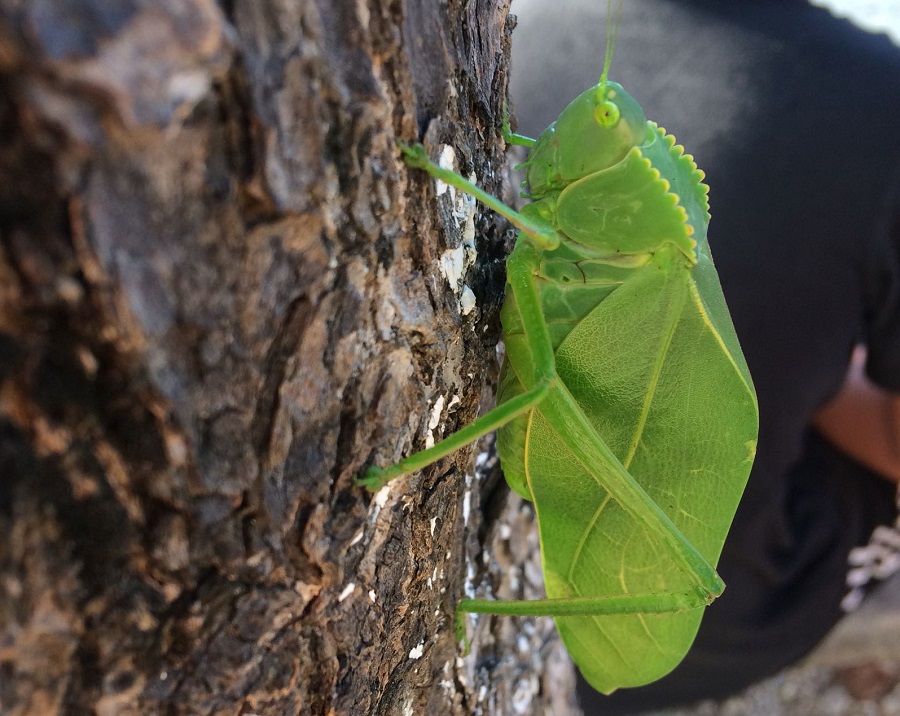
Tortuguero exists for its environment and ecological value with associated tourism (as does much of Costa Rica) and, although its remote, is one of the first places in Costa Rica with a full reuse and recycling facility. This doesn’t mean its totally clean and there is still a culture amongst locals and tourists to throw their plastic bags bottles and straws down rather than use all the facilities provided. This coupled with strong coastal currents that deposit flotsam and jetsam on the beach (i.e. other people’s plastic), meant that we had some beach cleaning to do. At least here we could put the waste into an effective system.
Following Tortuguero, we spent Christmas in a brewery/hotel/renewable energy research station/skatepark – all of my dreams come true! As many of our customers demonstrate, those who make beer, offer tourism and are involved in extreme sports tend to invest in the future with renewables. The site also has a small farm and one of the most interesting technologies on site was a small methanogenesis plant which takes the waste from their pig farm, feeds it into effectively a big plastic sock that catches the gas during decomposition which is then fed back to the hotel in a long hose to fuel their cookers. Simple and effective if not quite to Gas Safe standards! I am inspired to make a UK version when we return home.
We finished our time in Costa Rica on the Osa Peninsula, a wild land of whales, tapir and sloths. We fell in love with the basalis lizards, macaws and spider monkeys. Even here, there are loads of straws and bottles strewn around.
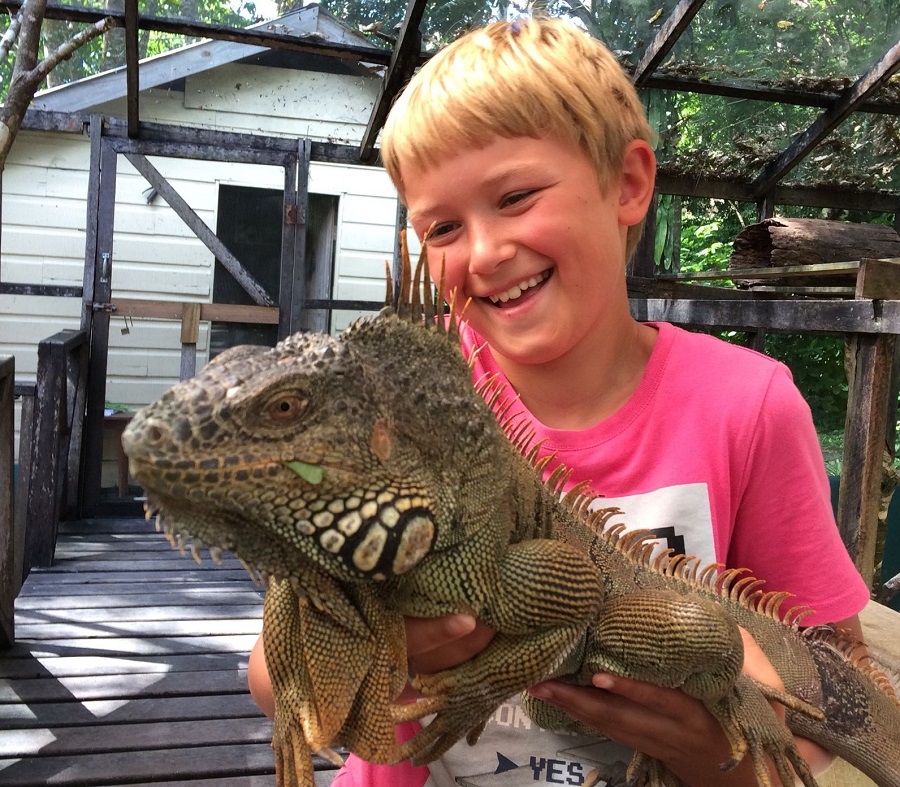
Costa Rica sells itself as an environmentally aware country with a very impressive 95-100% of their energy supply from renewable energy sources (wind & hydro). It is still struggling with a plague of plastic waste and single use plastic culture which many people attributed to the demands of its principal economy, tourism. Many local people blamed other countries saying that the waste had been washed from neighbouring territories.
Stop 5: Panama
To indulge the engineer in me, to educate the kids in great feats of world engineering and to find safe passage to South America, we raced through Panama only stopping in Panama City to visit the canal.
The canal is amazing and a highly recommended visit to anyone who finds themselves near, A huge undertaking in very difficult conditions that ended up nearly bankrupting France before the US stepped in and finished the job and benefitted from the profits. The advances in technology and scale owe a lot to English engineering skills developed from the construction of the UK railways and canals and most of the original huge steam powered machines that overcame the challenges were made in the UK.
Panama City is an interesting mix of old colonial buildings and modern US style high rise CBD but certainly worth a visit to experience this mix, enjoy the waterfront in the evening where many residents go to watch outdoor entertainment, have a beer and some seafood.
Panama City was no exception when it came to plastic waste in the sea, there seemed to be a throwaway culture on the seafront where drinks and food were sold and the waste immediately thrown over the sea walls.
Environmental Observations
We started ZLC Energy with a drive and focus to reduce the impacts of climate change. In recent years, climate change has been the environmental focus as the impacts are overarching. To a point, this has lessened the focus on waste, pollution and habitat destruction, problems that certainly haven’t gone away. Here are a few observations from what we’ve experienced in these places
Waste
1. Island Communities: Stupidly, we’ve never appreciated quite the logistical challenge of waste management in island communities but its obvious. The cost of shipping your valueless materials is huge. Typically this leads to bad landfill and recycling and collections schemes are difficult to deliver.
2. Plastic Straws: Across Latin America so far, the problems with plastic straws have been the same, the only thing that changes are their names! In Mexico and Cuba, straws are called popotes. In Belize & Guatamala they were called petillas. In Costa Rica, straws are called pajillas.
The problem is that most communities weren’t aware of the extent of the problem and believed that customers want straws with every drink. Every business we spoke with was happy to reduce using straws and to change to paper and reassuringly some have already acted.
3. Other Single Use Plastics: In tourist areas or difficult to access areas, most food and drink is sold in plastic so that they can be taken away or are easier to transport. On a positive note, elsewhere, for local consumption, drinks are sold in glass and have a return and reuse system. Coca Cola are an incredibly dominant company here and operate return and reuse schemes here and are starting similar schemes for plastic – so no excuses to reintroduce these schemes elsewhere where they’re needed then, Coke! If Coke do it, others will follow.
If you want to find out more or watch a (environmental) horror movie, watch our old friend, Rich Horner, as he filmed himself diving in plastic waste in the ocean in Bali or check out the great documentary, A Plastic Ocean on Netflix.
Habitat
There is still a lot of deforestation in many parts for the purposes of agriculture and settlement. In Cuba, Belize and Guatamala we saw land being deforested in swathes. All of the countries had protected areas but its a major cost to regulate and protect them for countries with limited resources.
There is mounting concern over the bleaching and mono-culture of coral reefs. Whilst snorkelling in Mexico and Belize, there was clear evidence of bleaching across many of the reefs. If you want to find out more watch another (environmental) horror movie, Chasing Coral on Netflix.
Energy
This part of the world has a bounty of resources but limited deployment of renewable energy in all but Costa Rica. There’s a huge and consistent amount of sunlight hours, wind yield, mountainous streams and very limited heat demand – perfect! Mexico is more developed and has a growing renewable energy supply. All of the other locations we visited may still have good fossil fuel resources or limited funds to start a transition to renewable energy supply.
Many of the island communities are still running off Heath Robinson arrangements of diesel generators in sites where renewables and storage would be perfect.
I’m now researching new affordable efficient and clean small scale waste to energy technologies that may be able to deployed in these locations in the interim… I’ll keep you posted.
Where next
We are now some way through Colombia (details to follow in the next instalment), on our way down through South America to Argentina.
Keep well and keep in touch,
Mark & the Smith Family
